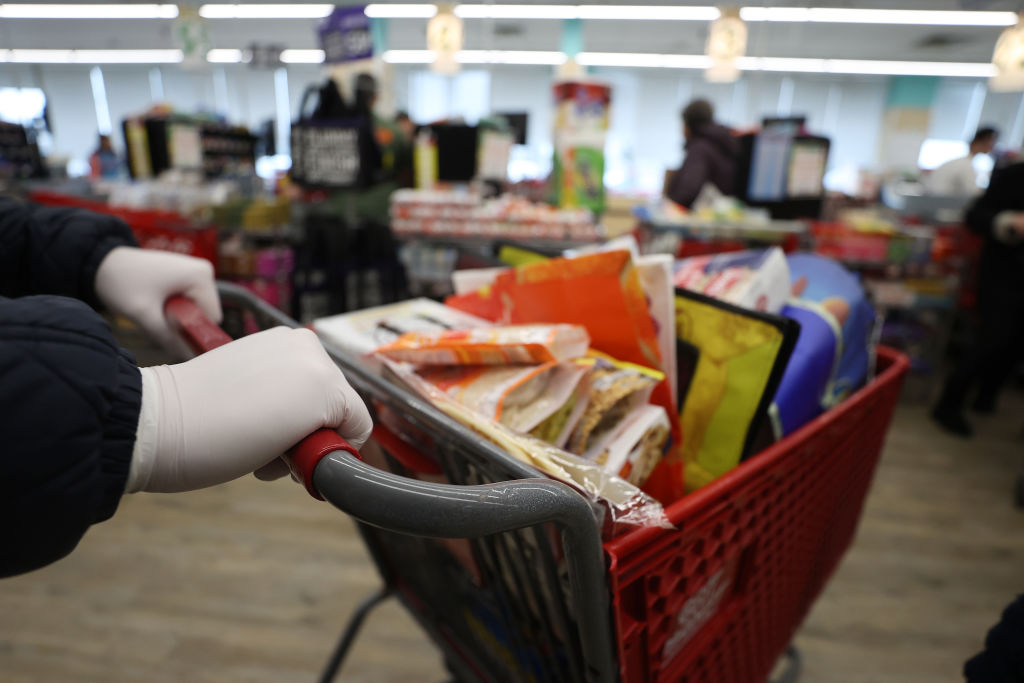
The COVID-19 pandemic is impacting the way Americans socialize, work and play—and how we spend money. Since March, virus-containment measures like lockdowns, quarantines and social distancing have altered our purchasing behavior, while the supply and demand of consumer goods—and the value they hold—has also changed.
But the U.S. Consumer Price Index (CPI), which tracks prices for a set basket of goods and services and helps policymakers measure household spending and inflation, hasn’t been adjusted for the pandemic—it doesn’t take into account that Americans stopped going to the movies but had started hoarding toilet paper, for instance. The CPI gives more weight to goods that make up a greater share of the typical consumer’s spending, but those weights are only assigned once a year. They were last updated by the Bureau of Labor Statistics (BLS) in Dec. 2019, which, of course, was before the pandemic hit.
What happens if we change the basket to accommodate for our altered spending behavior? To help answer that question, Alberto Cavallo, an associate professor of business administration at Harvard Business School, came up with an alternative “COVID CPI” that accounts for pandemic-era changes in consumer behavior. Using credit and debit-card transaction data, Cavallo found that Americans have been buying more food and alcoholic beverages (giving them more weight in his coronavirus-adjusted calculations), while spending less on transportation and recreation (giving them less weight). Supply disruptions, meanwhile, have also caused the prices of some goods to increase.
All things considered, Cavallo found, household costs have increased more during the pandemic than official figures suggest:
“Ultimately, our ability to buy goods and services depends not just on our wages and incomes, but also on the cost of the goods and services that we buy,” Cavallo explains. “The math is simple: if you get a wage increase of 2%, but prices also rise 2%, you have gained nothing.”
Cavallo’s research, originally published in the summer and updated in October, shows that the divergence in inflation rates was particularly stark in the earliest months of the pandemic. The annual inflation rate in May was 0.13%, according to the official CPI, but 0.95% according to his adjusted COVID-19 CPI. The two values have since moved closer, but are not yet in line. In September, the official CPI had a 1.41% inflation rate, while the COVID-19-adjusted index had a 1.9% rate.
Cavallo’s analysis also indicates that poorer households are feeling the effects of these inflation levels more than richer households (in absolute value, low-income households spend less money per food item, for instance, but they spend more on food as a share of total spending). In May, the annual inflation rate for the bottom fifth of households by income was 1.12%, but only 0.57% for the top fifth—a difference of 0.55 percentage points. In September, the difference was 0.25 percentage points.
These are large gaps for U.S. inflation levels, and they could have a significant cumulative effect if the pandemic persists. Cavallo cautions, however, that because a household’s bottom line reflects both spending and income, it would be necessary to run a separate analysis that factors in wages and unemployment benefits to know for sure if people are actually worse off. That millions of Americans are currently unemployed, for instance, muddles the analytical waters.
The CPI is an important measure of inflation, similar to the Personal Consumption Expenditures Price Index (PCEPI), another key metric that the U.S. Federal Reserve uses to maintain its target inflation rate. (The PCEPI excludes price-volatile food and energy categories, but Cavallo believes that it, too, would show discrepancies if adjusted for pandemic spending.) Knowing that these official indexes do not reflect reality could help guide monetary policy or government economic stimulus programs.
But it’s unlikely that government statistics offices like the BLS will change its index based on Cavallo’s findings. The International Monetary Fund has commented that pandemic-specific adjustments to the index offer a useful perspective, but warns that information on pandemic expenditure patterns is incomplete. Plus, any adjustments would likely be so short lived that they could actually result in less accurate inflation measurements in the longer term.
Even Cavallo himself doesn’t advocate for replacing the current CPI. But he does believe that an alternative index with a more flexible basket of consumer goods offers valuable insight in times of crisis. “No statistic is perfect,” he notes. “And we really need to have a variety of metrics to help policymakers understand what is going on.”
More Must-Reads from TIME
- Donald Trump Is TIME's 2024 Person of the Year
- Why We Chose Trump as Person of the Year
- Is Intermittent Fasting Good or Bad for You?
- The 100 Must-Read Books of 2024
- The 20 Best Christmas TV Episodes
- Column: If Optimism Feels Ridiculous Now, Try Hope
- The Future of Climate Action Is Trade Policy
- Merle Bombardieri Is Helping People Make the Baby Decision
Contact us at letters@time.com